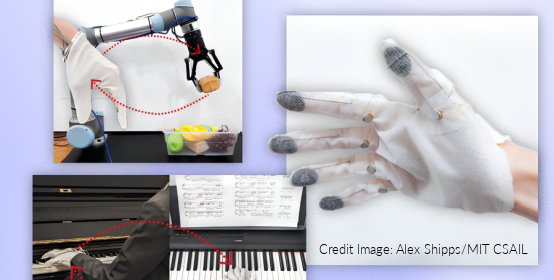
It's hard to overstate the importance of muscle memory when it comes to learning skills. Repetition helps your brain and body consolidate the information they need to perform a specific task virtually automatically. Your sense of touch is a vital component of this process, and haptic feedback is a way of allowing you to experience tactile sensations in a virtual setting. MIT's new adaptive smart glove is designed to give users a real-world tactile experience to help improve learning, robotics, and much more.
Haptic feedback refers to the technology that provides tactile sensations to users, bridging the gap between virtual experiences and physical interactions. For instance, if you've played a video game where your controller vibrates in response to actions like being hit or hitting an object, you've experienced basic haptic feedback. This type of feedback is crucial for creating immersive experiences, especially for those who learn best through physical engagement. While watching a video or reading about a task can provide a theoretical understanding, true comprehension often requires physical sensation.
Until now, conveying the physical sensations of virtual tasks effectively has been a challenge. MIT's new smart glove overcomes this by integrating tactile actuators and haptic sensors into a wearable glove. These components work together to simulate a wide range of sensations, from the resistance of piano keys to the precision required in surgical procedures.
The tactile actuators consist of magnets and copper wiring mounted on a non-woven textile. These components are similar to those used in smartphone haptic actuators but are adapted for more complex interactions. The sensors, made from a force-sensitive film and embedded in a textile with silver thread, capture the user's tactile feedback.
A significant advancement in MIT’s glove is its adaptive machine learning component. This feature personalizes the haptic feedback based on individual sensory experiences, improving the accuracy and effectiveness of the tactile sensations provided.
MIT's smart glove has several potential applications:
Virtual Learning: By providing tactile feedback, the glove enhances virtual learning environments. For example, music students can practice playing the piano with realistic key resistance, and surgeons can simulate the feel of different surgical instruments.
Skill Transfer and Recording: The glove can record and replay sensations, allowing experts to transmit their tactile experiences to others. This could be particularly useful in training scenarios where replicating expert touch is valuable.
Robotics: The glove can be used to control robots more intuitively. Instead of operating clunky controls, users can perform gestures that the robotic arm mimics, enhancing precision and ease of use.
Virtual Reality (VR): In VR settings, where visual and auditory immersion is often strong but tactile feedback is lacking, the smart glove can provide the necessary tactile sensations to create a more complete virtual experience.
While the current iteration of the smart glove is impressive, its potential is far from fully realized. Future versions could include:
Advanced Sensory Capabilities: Future models may incorporate the ability to simulate additional sensations, such as temperature and texture, providing an even richer tactile experience.
Expanded Wearability: More powerful actuators could be developed for other parts of the body, such as arms, legs, or torso, to create a comprehensive haptic feedback system. This would require designing actuators suited to the less sensitive areas of the body.
MIT has made all of the smart glove's training code and experimental data open to the public. This transparency encourages innovation and collaboration, potentially leading to groundbreaking advancements in adaptive haptic technology. As MIT refines their design and other developers explore similar technologies, we can expect exciting developments in how we interact with virtual and robotic systems.